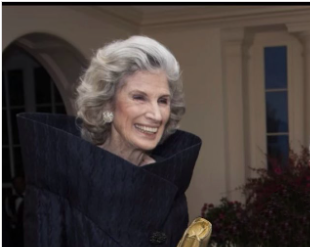Nancy Kissinger’s remarkable six-foot height was never only a physical characteristic. It evolved into a sort of tacit punctuation mark in public life. Nancy stood tall, both literally and figuratively, with extraordinary grace, whereas the majority of women in her generation adjusted their presence to be discrete in high-level situations. Her prominence quietly changed the political optics landscape even before image consultants became involved.

Nancy Sharon Maginnes was born in 1934 into a family with a history of athleticism and legal acumen. Albert Maginnes, her father, was a famous lawyer and football player. Growing up in White Plains, New York, she attended Mount Holyoke College and then Harvard, where she developed a strong interest in history and policy. She expanded her cultural horizons at the Sorbonne during a sabbatical, which perhaps influenced her subsequent cosmopolitan sensibility.
Nancy Kissinger – Personal and Professional Overview
| Name | Nancy Sharon Kissinger (née Maginnes) |
|---|---|
| Date of Birth | April 13, 1934 |
| Age | 91 years |
| Height | 6 feet 0 inches (183 cm) |
| Birthplace | New York City, United States |
| Education | Mount Holyoke College (BA), Harvard University, Sorbonne |
| Spouse | Henry Kissinger (m. 1974 – his death in 2023) |
| Occupation | Philanthropist, Political Aide |
| Organizations | Rockefeller Brothers Fund, Council on Foreign Relations |
| Notable Role | Director, International Studies – Commission on Critical Choices |
| Reference |
Initially positioned in New York Governor Nelson Rockefeller’s inner policy circle by Henry Kissinger himself, she had become a trusted advisor by the late 1960s. Years of policy cooperation developed from what started as a research position on a Rockefeller task committee. In the end, she served as the director of foreign research for Rockefeller’s Commission on Critical Choices, where her strong intelligence was very useful.
Her height evolved into a complex aspect of her public persona rather than only a numerical value on paper. Nancy’s tall stature generated optical symmetry with Henry Kissinger, who was about 5’9″, upending conventional gender optics without apologies. She leaned into her presence, in contrast to many public individuals who attempted to minimize it. Long coats, sophisticated silhouettes, and tasteful simplicity were staples of her wardrobe, which matched the dominating elegance of leaders like Michelle Obama and Queen Letizia of Spain.
She rarely addressed the media, but when she did, her remarks were very explicit. People who worked with her commented on how she could affect results without taking over discussions. Nancy’s composed demeanor offered something especially novel in a time when performance diplomacy was on the rise: real power without the show.
Her continued significance was evidenced by her affiliation with the Council on Foreign Relations. She continued to participate in discussions influencing global policy even after leaving her official position. She continued to provide discreet advice through established networks and strategic alliances, contributing a historical perspective fashioned by decades of working with one of America’s most illustrious ambassadors.
Nancy Kissinger became a silent force in redefining the position of the political spouse in the setting of changing gender dynamics in the 1970s and 1980s. Her height served as a sort of metaphor for her style: unwavering, unquestionably present, and impervious to reducing herself for the comfort of others. Even though traditional femininity was valued in her age, she seemed unfazed.
Nancy’s subdued declaration of presence has been reexamined in the last ten years as younger women have fought for greater visibility in tech and politics. She never tried to draw attention to her size, intelligence, or sense of style, but all three developed into incredibly powerful instruments of influence.
Nancy created a legacy without the need for microphones by utilizing her education, reputation, and intelligence. Even if her contributions were frequently made in the background, they nonetheless have a significant influence in high-level diplomatic circles. She was a living example of soft power before it became a trendy term.
Many political partners nowadays strive for TV appearances, social influence, or media savvy. Nancy Kissinger had a very different model. Before entering the room, she had a clear understanding of it. Her ability to accurately read individuals, policy drafts, and international currents was remarkably similar to those of experienced diplomats who foresee trouble before it arises.
Nancy Kissinger’s legacy has attracted increased attention since Henry Kissinger’s death in 2023. She was a strong woman in her own right, not a sad widow. Her imposing presence is still remembered in diplomatic circles as a reminder that sometimes having elegance, presence, and strategic clarity can have a greater impact than having the loudest voice in the room.
Her story still has resonance, especially for women in leadership positions where presence is valued more highly than policy. Nancy Kissinger’s silent defiance of fading into the background made her a symbol—a towering one, both literally and politically. Her resilience, intelligence, and height combined to create a persona that changed the way impact is measured.











